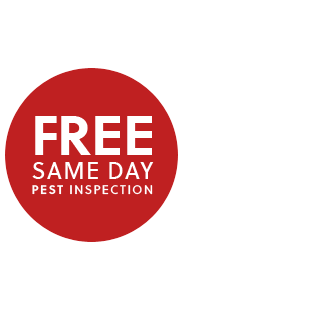Getting ahead of drywood termite season
Most California homeowners know the most frequently encountered termite threat to their homes comes from subterranean termites that live in – and silently launch their destructive attacks from – the soil underneath homes and other structures.
Clark, your neighborly pest control, termite, and lawn care expert, wants to make you aware of another termite species that doesn’t get down and dirty, but still poses a significant threat to the wood in your home: the drywood termite.
Drywood termites live above ground inside the wood in your home. Adult reproductive termites, called swarmers, can be seen flying around outside your home after a spike in the thermometer that follows cooler temperatures.
Drywood swarmer season starts at the end of June, and it will run through early fall. It’s important for you, as a homeowner, to be proactive when it comes to drywood termites.
These obscure insects are difficult to detect. They live deep inside wood, and except during periods when they swarm, or when repair work is being done on infested homes, they are seldom seen.
Drywood termite colonies are typically smaller, typically fewer than 1,000 individuals, when compared to their subterranean cousins. These termites can be widely dispersed in a home, and their colonies can take years to mature.
What areas of a home are most susceptible to drywood termites?
- Wood siding and wooden roof shingles
- Wood framing and supports in attics
- Wood moulding and framing around windows and doors
- Eaves and overhangs
- Protected joints or crevices in and around doors
How do drywood termites damage your home? They excavate a small tunnel into the wood, close it behind them, and create a hollowed-out chamber that compromises the structural integrity of the wood.
Drywood termites can stay dormant for extended periods of time – more than a year – and then reemerge stronger and hungrier than ever. They also are creatures of habit and will reinfest the exact same location in a home, causing further damage.
Four signs of drywood termites
- Large numbers of flying insects outside and/or inside your home that appear to be focused on wood.
- Discarded wings on windowsills.
- Hollow-sounding or visibly damaged wood that is honeycombed or carved out. If you can easily make a hole with a pocket knife or flat-blade screwdriver in the wood, it might have drywood termite damage.
- Unexplained piles of what looks like coarse grains of sand (these piles are termite fecal pellets called frass, which have been sifted out of wood by the drywood termites) inside your home.
Knowing where to look for drywood termite activity requires a highly trained eye. So does analyzing the inspection findings and assessing whether treatment is needed, and what kind of treatment will work to put an end to drywood termite activity.
Drywood termite treatments are often categorized as whole-structure or localized. Whole-structure treatments are defined as the simultaneous treatment of all infestations, accessible and inaccessible, in a structure – e.g., tented fumigation. Localized or spot treatments are more restrictive and are often applied to a single board or small group of boards
The drywood termite experts at Clark Pest Control will help determine which treatment plan will deliver the best results.
Don’t forget to ask about Clark’s exclusive Termite Infestation Protection (T.I.P.) program, which is designed to protect your home from future infestations and damages. A full inspection must be done to see if your home qualifies, and then, for a small monthly fee, you can avoid costly out-of-pocket treatment and repair expenses, giving you not only peace of mind, but saving you money and headaches caused by both subterranean and drywood termites.
Call or text Clark at (800) WE-NEED-YOU (936-3339) if you suspect you might have drywood termites in and around your home. You can also email clarkcares@clarkpest.com for more information.
Until next time, the pest management professionals at Clark Pest Control thank you for helping to keep unwanted pests out of your home and yard.


